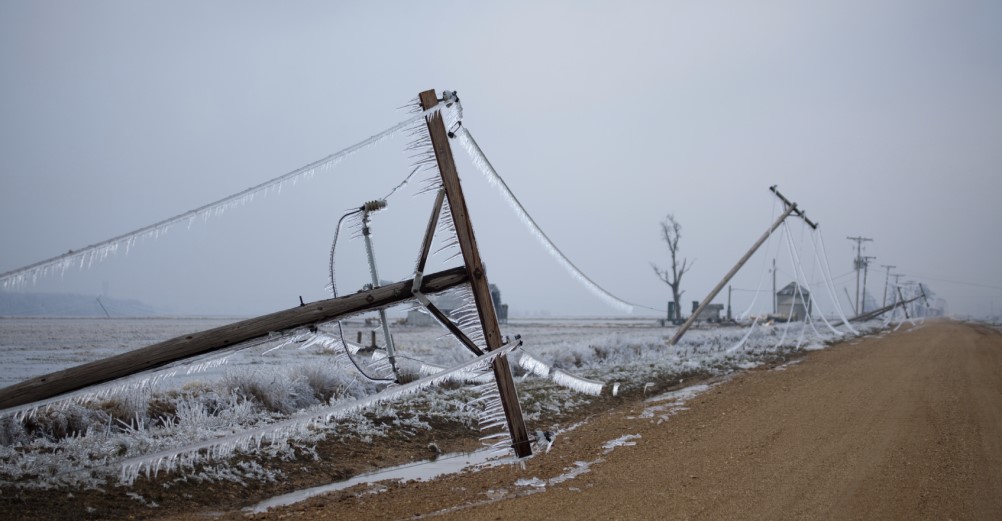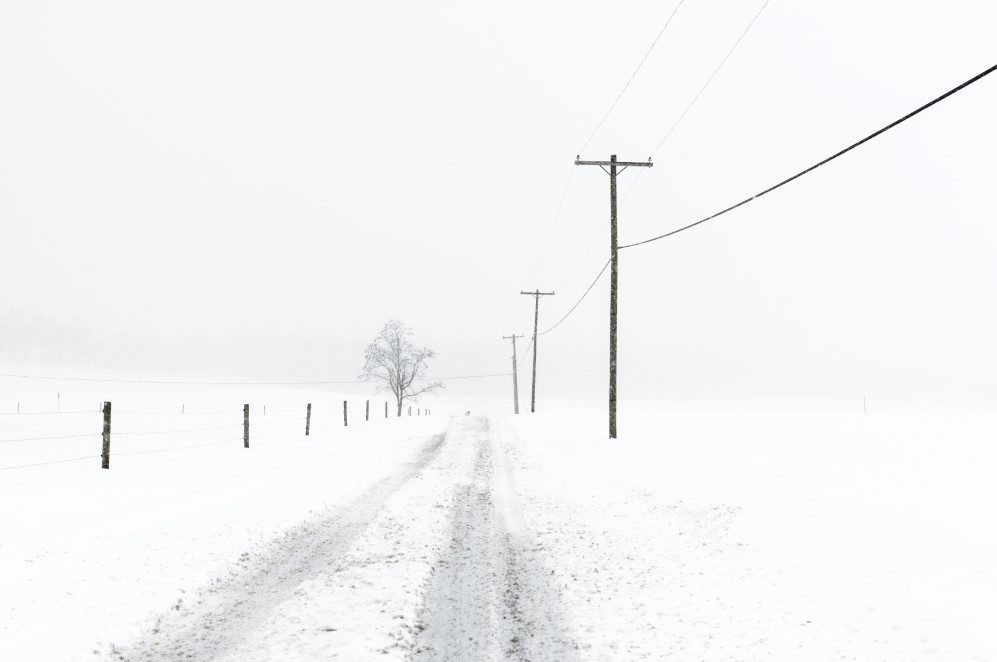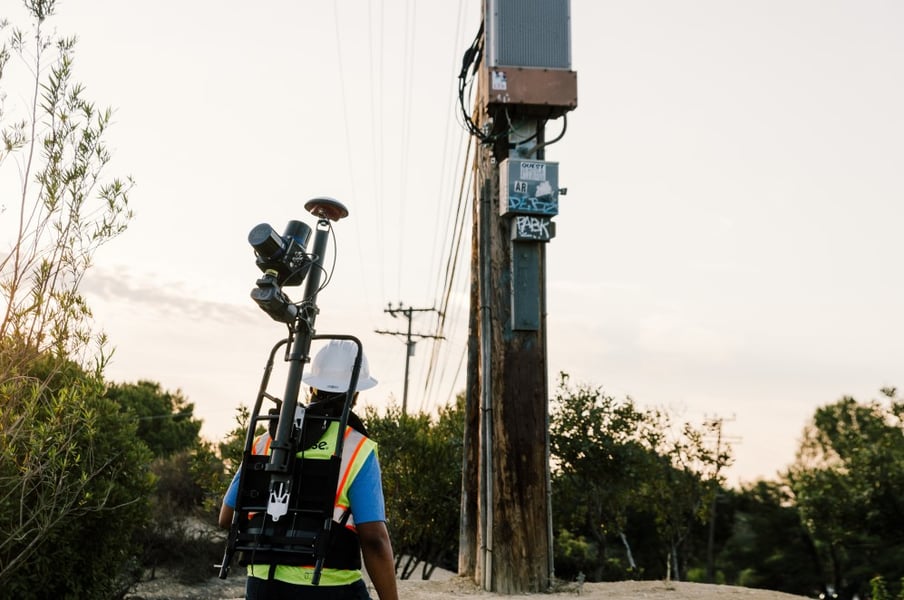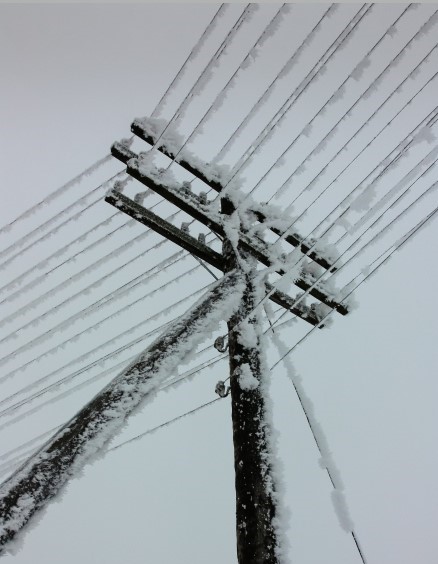A Trusted Partner
Creating a New Model for Resiliency in the Heartland

It’s not so much when the wind comes sweepin’ down the plains that worries Oklahoma Gas and Electric Company (OG&E)’s Bobby Shaffer–it’s the ice. For Shaffer, OG&E’s Manager of Asset Management, reducing the recovery time from disasters is a top priority. The October 2020 ice storm that knocked out power for over 300,000 customers was the kind of event that changed the way he looked at resiliency. The Sooner State experiences a significant ice event every decade or so, but this storm was unlike any the region had seen in a long, long time.
The University of Oklahoma warned its students at its sprawling Norman campus to beware of “lightning-infested sleet and freezing rainstorms.” A thick glaze of ice started to accumulate on roads, buildings, trees, and power lines on Monday, October 26, and continued to fall for two days. Gusty winds pulled down ice-covered power lines and trees, many of which were still fully in leaf due to the storm’s early season arrival. The media reported “tree carnage,” with limbs falling incessantly over the course of several days. Forestry crews rushed to Oklahoma City National Memorial Park to prop up the ice-weighted limbs of the Survivor Tree, a memorial American elm that honors the lives lost in the domestic terrorist bombing of the Alfred P. Murrah Federal Building. Nonetheless, a major limb was lost on the beloved tree. High-power lines came down across interstates, snarling traffic and cross-country shipping lanes across the heartland. Many surface roads remained impassable for weeks.
People outside of Oklahoma may not realize, but the Sooner State ranks as one of the top states in the country for weather events. In fact, according to the Federal Emergency Management Agency (FEMA), it ranks second. As a result of this 2020 storm, it would be 16 days before the last OG&E customers were brought online. At its peak, over one-third of OG&E's customers were in the dark, and that was unacceptable.
Deeper Data for Smarter Decisions
Areas, where previous issues occurred during prior storms, saw several failures in October 2020. OG&E had expected its infrastructure to be more resilient to the severe weather. In the months that followed, the electric company formed a team to examine the root causes of its grid challenges. “What can we do to help our customers have the confidence that their lights will remain on in these major events?” Shaffer asked. “And if the power does go off, can we get it back on quicker?”
Shaffer and his colleagues wanted real resilience for OG&E’s grid. They needed to understand how the service provider could make changes to reduce the severity of future events and shorten the duration of outages.

In the end, the group committed to a deeper understanding of their grid, reassessing what it had been designed to withstand and what practical improvements could be made to improve its weather resilience.
"It's a customer-focused situational awareness of the system,” Shaffer said. “We took inspiration from some of the Gulf Coast electric companies that have been proactive. Going out and investigating, understanding the pole strength and structural loading of each asset in the field and what they could withstand."
OG&E was well aware of Osmose. With several decades of groundline review of transmission structures by Osmose, OG&E then contracted with the metro Atlanta-based company on a pilot project of distribution ground line inspections in 2019 and were impressed with their technical expertise and diligence. They engaged Osmose to support OG&E’s commitment to a more targeted approach to grid hardening.
Even with the many weather challenges in its territory, OG&E customers enjoy some of the lowest electric utility rates in the country. That’s the result of an adamant focus by OG&E on finding and delivering value for customers. The electric company realized they could deliver the best value for customers if they took a more prioritized, data-driven approach to make the grid truly weather resilient.
Four Steps to Structural Resilience
After an onboarding process to understand OG&E’s specific needs, Osmose rolled out a four-step process to maximize value in making overhead lines more structurally resilient for their customers.
Step 1
The first step involved detailed field data collection using OsmoVision®, an Osmose developed combination of field collection methods and integrated data processing automation that enables efficient and accurate utility structure modeling. Using a combination of vehicles outfitted with GPS, LiDAR, and hi-res imaging cameras and backpack tools for walkout inspections, Osmose technicians collected highly accurate and automated data for the territory. They went beyond the standard aerial shots and drive-bys. By adding a walkout format with advanced image and LiDAR capture tools in a package that technicians could carry into Oklahoma’s diverse terrain, they were able to capture data that exceeds the limitations of vehicle or aerial only information gathering. The advanced technology eliminates the need for more traditional and subjective measurement toolsets.

Step 2
The second step included automated classification and image processing. Using the LiDAR data and imagery collected in step one, Osmose technicians were able to precisely measure heights and distances between poles and identify attachments, and create a geo-referenced database for all attached objects. Osmose’s proprietary image recognition tools created valuable automated information that fed pole models in Osmose’s structural analysis engine, O-Calc® Pro. This step was key to creating a complete picture of OG&E’s existing grid, understanding where the accumulation of attachments on poles over the years can lead to overload.
Step 3
In the third phase, the O-Calc Pro tool showcased Osmose’s advanced engineering software. The software created a complete digital model of the OG&E’s pole network, including a comprehensive structural load analysis. That model allowed Osmose to prescribe effective solutions for any found conditions throughout the network and to offer efficient remediation options. The models are then stored in a secure pole-loading database that can offer solutions for future work.

Step 4
The fourth step provided a pole-by-pole recommendation that took into account the remaining strength estimation performed during the evaluation and life-extension treatment process and the pole load analysis results. The resulting recommendations included poles that already exceeded the strength required for OG&E’s design loads, poles that should be strengthened using engineered trussing systems, and poles that require a stronger replacement. For each pole that failed OG&E’s weather hardening design criteria, Osmose provided a detailed prescription of the truss system and size required for strengthening the asset or which replacement size was recommended.
Restoring Safety and Strength Above Standards
Even before the 2020 ice storm, OG&E’s grid already met National Electrical Safety Code (NESC) standards for the region. But now, to achieve the kind of resilience Oklahoma’s evolving climate reality required, the work would have to exceed those standards and provide value to its customers.
Although much of the work is ongoing, Osmose estimates that they will analyze and harden over 1,200 line-miles for this initial effort, encompassing 38 circuits and roughly 49,000 poles. Of those, over a quarter are projected to require strengthening to exceed new OG&E loading standards designed to improve resiliency. With Tough Truss® installations on over 9,000 of these structures, Osmose is estimating a cost savings of up to 65 percent or $49 million saved versus replacing every identified pole.
The pole replacement rate required to bring true weather resiliency to OG&E’s customers is less than 5 percent of all poles evaluated.
Using the OsmoVision collected and processed data, Osmose was able to pinpoint - even on newly constructed lines - which poles would need to be strengthened and it prescribed solutions to exceed the prior OG&E pole loading standards so that the assets would better withstand the next major weather event.
Above the savings, safety is central to all of OG&E’s efforts. OG&E enjoys the top safety rating in the Southeast Electric Exchange and lets that drive its decisions. That applies to everything from how line workers are trained to the material choices for their poles. The company is currently exploring composite distribution and transmission poles to avoid conductive metal infrastructure. As part of building greater grid resiliency, Osmose performed its standard ground line strength evaluation of poles which provided added reassurance for OG&E lineman in the field. “Our line workers evaluate every pole they climb, but when they see an Osmose tag they know groundline has been thoroughly inspected and evaluated by the groundline experts,” Shaffer said.
Beyond the improved resilience of OG&E’s grid, there’s still something more for Bobby Shaffer. “We’re strengthening our customer-focused situational awareness of the system in order to continue providing reliable, life sustaining, life enhancing energy solutions to our customers,” he said.
Conclusion
The pole-by-pole digital models generated by Osmose with their proprietary OsmoVision tool set, O-Calc Pro engineering software, and talented pole modeling technicians gave OG&E that deeper understanding of its own grid and provided a roadmap for how to create its own model of resilience, not for tropical hurricanes, but for Oklahoma ice storms.
“We're making adjustments and making progress. Our new resiliency effort is confirming with data and analytics what we suspected and we’re leveraging all the information we have and the expertise of Osmose to make sure we’re on the right path,” said Shaffer
Based on this intelligent approach, OG&E has become an industry steward in future proofing its grid infrastructure – anticipating and building additional capacity, upgrading its assets for harsher conditions beyond basic code requirements, and preparing to scale to meet the needs of shifting customer demands and climate conditions.

.png?width=243&name=Osmose-logo-(white).png)